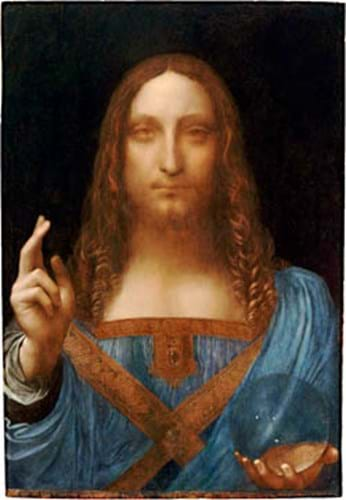
Over 20 copies were made by students or followers of the artist, and two preparatory drawings for the drapery and raised arm of Christ are in the Royal Library at Windsor.
The painting was first documented in 1649 in the collection of Charles I and returned to the Royal Collection upon the accession of Charles II. It then passed to the Duke of Buckingham, but disappeared after his son put it into an auction in 1763.
This current work is known to have been purchased by Sir Frederick Cook in 1900 and sold by his descendants at a Sotheby's sale in 1958 for £45. Then it was catalogued as a copy after a work by Giovanni Antonio Boltraffio, one of Leonardo's students.
It was then taken to America and entered a private collection until it was sold following the death of a family member around six years ago.
Could it be that this was the original Salvator Mundi?
When first seen by the dealers, the condition of the picture and its walnut panel was hardly ideal. The surface had long been covered with overpaint, the panel had split and bowed, and large areas of stucco fill were present from previous restoration attempts.
While there have been losses, new restoration has revealed much of the original features of the work, including the transparent orb and the complicated design on the tunic.
The owners will be publishing a volume on the condition of the picture in due course, but scholars have now given Salvator Mundi their full backing.




